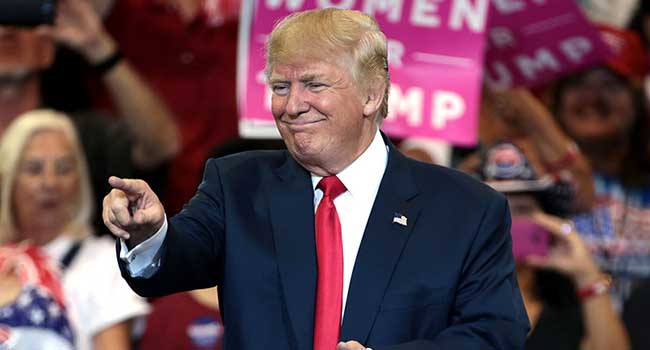The surprise election of Donald Trump as the 45th president of the United States is likely to have far-reaching impacts on the economy, capital markets and, by extension, commercial real estate.
The nature of these impacts is more opaque than in most election cycles because policy discussions took a back seat to personalities during the candidates’ debates and speeches. Nevertheless, we can make some early observations based on a short policy statement titled “Donald Trump’s Contract with the American Voter,” written by three campaign advisors: investor Wilbur Ross, businessman Andy Puzder and economist Peter Navarro. The authors anticipate that the policies proposed in the statement will increase GDP from the 2.1 percent annualized rate that has prevailed in the current expansion to the range of 3.5 percent to 4.0 percent, although mainstream economists question this.
Here, very briefly, is an outline of the president-elect’s preliminary economic proposals and some commentary on the potential benefits and risks for the economy and, where applicable, commercial real estate:
Taxes and infrastructure
A massive stimulus package consisting of major business and personal tax cuts, a simplification of the tax code and a huge $1 trillion investment in infrastructure.
BENEFITS: This would provide a big fiscal boost to consumer and business spending as well as occupier and investor demand for commercial real estate.
RISKS: It would arrive in the late innings of the expansion when the labor market is near full employment and wage growth and inflation are picking up. While it would boost GDP, it would also likely boost deficits and debt, putting upward pressure on interest rates — and potentially cap rates — beyond the gradual increase envisioned by the Federal Reserve.
Trade
Renegotiate or withdraw from NAFTA; withdraw from the Trans-Pacific Partnership (TPP); enact stiff tariffs on countries believed to engage in currency manipulation, notably Mexico and China.
BENEFITS: A modest increase in domestic demand for manufacturing facilities and a stronger increase in demand for warehouse and distribution facilities, as companies reconfigure their supply chains.
RISKS: Protective tariffs could increase business costs, reduce U.S. exports, raise import prices and boost inflation.
Regulations
Moratorium on new regulations by government agencies and a review of existing regulations, including Dodd-Frank.
BENEFITS: Could make it easier for businesses to invest and hire; could loosen federally mandated environmental and development regulations on new commercial construction.
RISKS: Unknown impact on the public benefits achieved by the regulations, such as a clean environment and low-risk financial system.
Energy
Lift restrictions on the production of domestic energy reserves, including oil, shale oil, natural gas and coal.
BENEFITS: Could increase supply of energy and reduce costs for consumers and businesses; could potentially help energy-producing regions of the U.S.
RISKS: Unknown environmental implications; could aggravate existing oversupply of oil and gas, particularly as electric vehicles become more numerous.
Immigration
End illegal immigration, build a border wall and increase penalties for (and potentially deport) undocumented immigrants.
BENEFITS: Increase job opportunities and wages for U.S. citizens by reducing the supply of labor.
RISKS: Potentially harsh humanitarian impacts depending on how the policy is implemented; could create a shortage of workers, including in the construction trades, in an already-tight labor market, thus raising development costs; could reduce consumer spending in neighborhoods with high percentages of immigrants, potentially hurting small retailers.
Healthcare
Repeal and replace the Affordable Care Act (Obamacare).
BENEFITS: The program needs an overhaul, as major insurers continue to drop out, and the remaining insurers raise premiums.
RISKS: Unknown impact on the 20 million people currently covered by the program; could reduce marginal occupier and investor demand for medical office buildings and other healthcare facilities, but most likely this would be offset by burgeoning demand for services from aging Baby Boomers.
Child care and elder care
Tax deductions and dependent care accounts for child care and elder care expenses; incentives for employers to provide on-site child care services.
BENEFITS: Reduce the burden for working families with children.
RISKS: Costs are unknown.
Two caveats
The devil is in the details, which is especially true for such a brief policy statement — really more like a list of talking points. Secondly, implementation will depend on a Republican Congress that shares the same party label as President-elect Trump but not necessarily the same policy goals, such as increasing spending and deficits. Thus, these policies are likely to undergo substantial revisions or could be dropped altogether.




